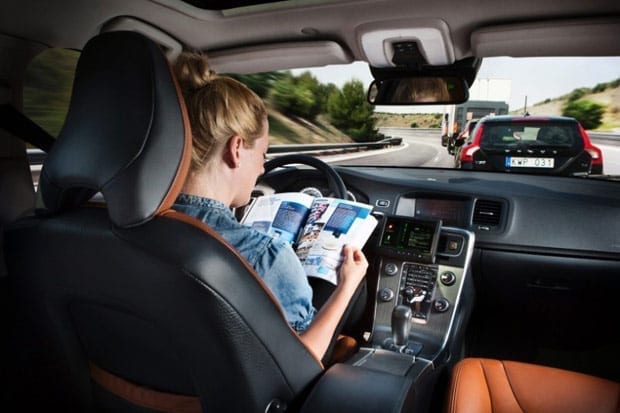5/18/2015

As mentioned in my last post, Google has just launched the first self-driving car onto public roadways near its California headquarters. This comes after the company recently admitted to the vehicles being involved in 11 minor accidents, with no injuries and little damage during 6 years of testing. These revelations confirm many people’s concerns about the safety of the vehicles, an issue that innovators such as Tesla’s Elon Musk have obsessed about over the past few years. Moreover, assuming that the world is, if anything, decades away from completely preventing transportation accidents or malfunctions while self-driving vehicles will likely become a consumer commodity within 5 years, legal liability and insurance law will likely be among the major policy concerns in the near future. Recent innovations in driver-assisted technology in newer model vehicles may illuminate this murky path to some degree, and Musk himself, believes that one of his inventions may also help to clarify the future of liability for self-driving vehicles. This future may be closer than we think.
The top concern regarding self-driving cars is what happens and which party is legally responsible in the event of an accident. A study by the Insurance Institute for Highway Safety (IIHS) determined that newer technology has contributed to a reduction of fatalities among automobile crashes in recent years, especially electronic stability control’s ability to reduce rollover accidents. The Insurance Information Institute believes that since automated cars will significantly reduce driver-error as the primary cause of accidents, the rate of collisions should decline drastically. This may not, however, necessarily mean lower insurance rates for self-driving vehicles. Even if premiums can be mitigated to some degree by a reduction in accident frequency, distinctions between vehicle and user liability will be much more difficult to determine than with ordinary vehicles. California, for example, currently requires a $5 million insurance policy for each automated vehicle, making them for the most part, luxury items at best. A 2014 Rand Corporation study suggests a similar program to many states’ “no-fault” policies as an alternative to tort-based laws.
At the same time, the legal parameters surrounding product liability will still need to be further defined. As law professor Bryant Walker Smith notes, “Assuming that you are not dead, you are in a much better position than if you had been hit by an ordinary, human-driven vehicle.” This is largely because of the money at stake by the very well-funded companies who are advancing this technology would likely lead to a substantial settlement to avoid negative public sentiment. Using an example of a self-driving car hitting a pedestrian, California law would likely consider it to be a product-liability issue. As Santa-Clara University law professor, Robert Peterson notes, “California law has a definition of a design defect that would favor a person who is hit,” saying that if the vehicle “fails to behave in a way which a reasonable consumer would expect it to behave, that is a defect.” Manufacturers may not be as likely to accept the assumption that it was their products which were liable; however, noting Google’s self-driving project manager, Chris Urmson’s statement upon announcing the 11 accidents that, “Not once was the self-driving car the cause of the accident.”
Tesla’s founder, Elon Musk, believes that he may have, at least in part, a solution to the driver vs. product liability dilemma. Progressively adding semi-autonomous functions on the automakers most current vehicles, Musk believes that an old-fashioned turn signal may help to clarify this murky section of law. But requiring drivers to push a turn-signal button when passing other vehicles, it would implicitly assume liability of the driver by actively involving the driver in the process, even if the vehicle is controlling the actual maneuvers. Musk, however, has also stated that he imagines the concept of “drivers” to be obsolete, and in fact, illegal within the next few decades, making the concept of driver-fault to eventually be an irrelevant issue. Until that happens, if it ever does, the interim will require additional legal definitions to determine the parameters of liability among drivers and manufacturers.
Sources:
Crain’s/AP – Justin Pritchard
Insurance Information Institute
Wall Street Journal – Mike Ramsey


Join the conversation!